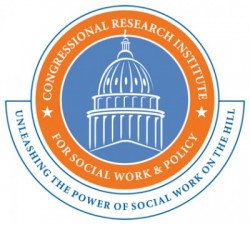The White House and many economists celebrated recent good news from the U.S. Census that real median household income increased significantly by 5.2 percent from 2014 to 2015.
It was the fastest growth on record and much of the growth was experienced by low- and middle-income households. That good news was buttressed by reports of a significant 1.2 percent drop in the nation’s poverty rate, resulting in 3.5 million people being lifted out of poverty. Sweetening the pot was the news that 2.4 million full-time workers were added to the labor force. Before we get too excited, we must remember that positive growth in household income is long overdue. The 2015 median household income level is still 1.4 percent lower than the 2007 level, the year before the Great Recession; and it is 2.4 percent lower than its peak in 1999. In addition, with inflation at a paltry 0.4 percent, any adjustment to median household income would be minimal which helps explain the large increase.
While not wanting to rain on this parade of glad tidings, we ought not to forget that middle class wages have been virtually stagnant for more than four decades even though productivity has risen steadily. The annual rate of growth for the Gross Domestic Product (GDP) has been an anemic 2.0 percent since the end of the recession in 2009. Last quarter’s GDP rate was adjusted to 1.4 percent last week, adding a few percentage points to a paltry 1.1 second quarter growth reported earlier which followed dismal 0.8 GDP growth in the first quarter of the year. At the same time, economic inequality continues to escalate unabated. This is not good news for the middle class.
Two news stories addressing the plight of the middle class were lost in the tempest of Monday’s presidential debate and Donald Trump’s post-debate maelstorm. An article in Saturday’s Washington Post examined Virginia Senator Mark Warner’s quest for the right recipe of policies that will address the needs of the growing cadre of contract workers as symbolized by our Uber-driven society. As industrial production becomes more automated and factories situate where wages are the lowest, American workers must compete with other low-wage populations and adjust to a more fluid work environment by offering their skills and talents to the highest bidder. Warner wants to create portable benefits that workers can carry from job to job. He envisions workers paying some of the cost with employers contributing and a third party managing the transactions. It’s a worthwhile idea but not a game changer.

Economist Larry Summers says middle class stagnation has led to low economic growth.
The other big news came by way of a Washington Post op-ed by Larry Summers, former Harvard University President, U.S. Treasury Secretary in the Clinton administration, and chief economist for President Barack Obama. With those credentials, Summers should know a lot about the economy. In the op-ed he highlights an International Monetary Fund working paper on income polarization in the United States and concludes that our stagnant middle class may be causing slow economic growth. As remedies, he calls for more collective bargaining, infrastructure spending, and—oh, my god—more progressive taxation. Most policymakers acknowledge the Reagan and Bush supply-side, trickle-down tax cuts that gave huge tax breaks to wealthy “job creators” pushed the inequality accelerator to the floor. We should know by now that job creation is driven by consumer demand—put more money into the hands of middle- and low-income households and they will purchase the goods and services that spur entrepreneurship and create employment.
My economics training is sparse. I bow to the highly-trained economists who are the experts. However, I have been preaching this for a while. Students in my policy classes at Howard University will attest to that fact. In one of my earlier blog post in April, 2013, I wrote about how Inequality is Killing the American Dream. In that post I posited that lack of consumer demand was causing economies to experience slow economic growth. In a blog post a year later in April, 2014, I argued that Progressive Taxation is the Only Way to Fix the Economy. At the Grand Challenges conference last month, I tried unsuccessfully to get Jared Bernstein to go on record in support of more progressive taxes. I understand the reluctance of economists to support redistributive policies, but this has more to do with common sense.
Written By Charles E. Lewis Jr., Ph.D
Restoring Economic Vitality to the Middle Class was originally published @ Charles Lewis – Congressional Research Institute for Social Work and Policy and has been syndicated with permission.
Our authors want to hear from you! Click to leave a comment
Related Posts






